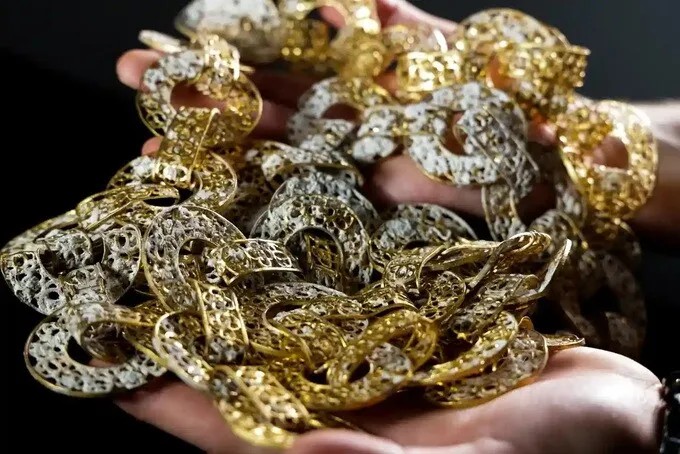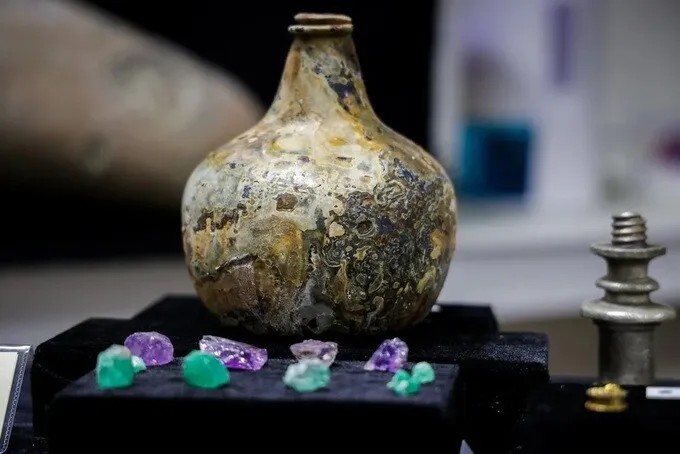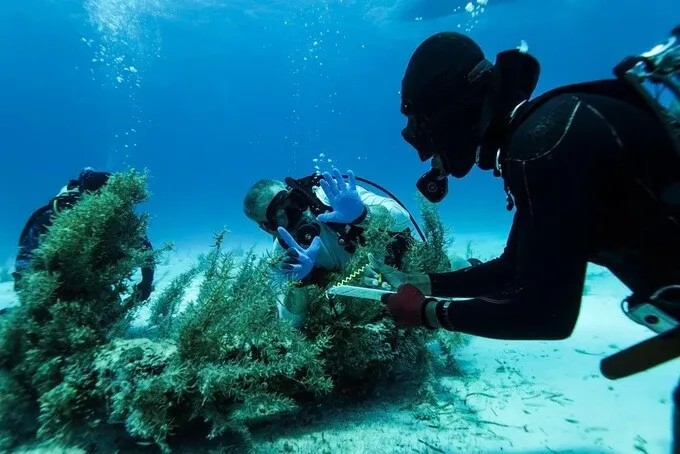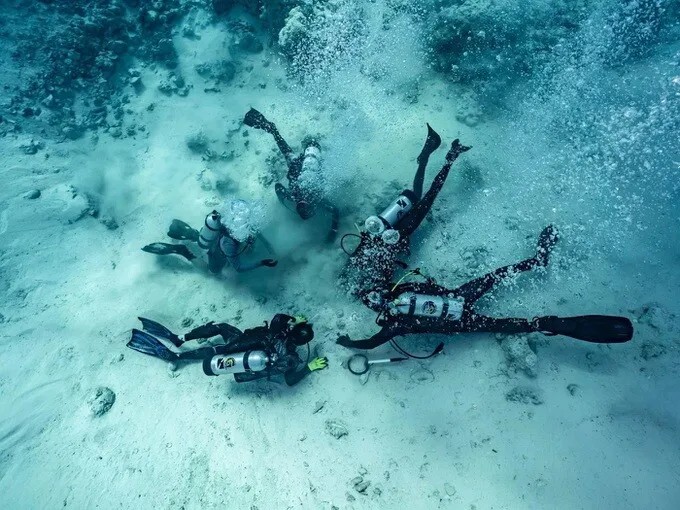Previously, expedition teams from Spain, England, France, the Netherlands, the Bahamas, the United States… have made countless searches since the time the ship was wrecked.
Recently, archaeologists were amazed by the priceless treasure that has just been rediscovered. This treasure has been lying deep on the ocean floor for hundreds of years. The Nuestra Senora de las Maravillas (Lady of Wonders) ship was originally a large ship in the Spanish fleet.

This treasure has many pendants with gems, elaborately carved gold rings.
On the ship’s last voyage in 1656, the Nuestra Senora de las Maravillas loaded with treasure, on its way back to Spain, sank in the waters off the Bahamas. Soon after the news of the ship laden with gold and silver was released, countless treasure hunts of all levels and scales have been carried out over the past 350 years.
When a large-scale expedition was recently conducted, many archaeologists believed that after hundreds of years and countless searches have been conducted at the levels, there should be nothing left to find. But the surprise is that they have found a small treasure that is still lying deep in the ocean floor after hundreds of years.
This treasure has many pendants with precious stones, gold rings are elaborately carved. This treasure has not been touched by expedition teams for hundreds of years, it still lies on the ocean floor until it was recently rediscovered.

Recently, archaeologists were amazed by the priceless treasure that has just been found.
The expedition team scoured an area stretching 13km under the ocean floor. The Allen Exploration expedition team, along with archaeologists and divers from the US and Bahamas, collaborated on this search.
The search is licensed by the Bahamas authorities for scientific purposes and the found treasures will be displayed in a newly built oceanographic museum in the Bahamas. The museum will go into operation from 8/8 here in the city of Freeport (Bahamas).

The sophisticated and sophisticatedly made jewelry will make the public overwhelmed when having the opportunity to admire. The Nuestra Senora de las Maravillas is part of a large fleet of ships owned by Spain. Before sinking, this ship was on a voyage back to Spain, after being loaded with treasures collected from many American countries.
On the night of January 4, 1656, the ship sank due to a fatal mistake in entering shallow water. The ship was collided with a coral reef. Only 45 of the 650 crew members on board survived. Many people have died from shark attacks.

The search operation is licensed by the Bahamas authorities for scientific purposes.
The fact that archaeologists can find the remaining treasure is also considered a miracle. Because time has passed hundreds of years, the sea where the ship sank is a rough water with many dangers that can occur during exploration, but after all, a treasure remains. intact on the ocean floor for the expedition team to find and will soon be put on display.
Previously, expedition teams from Spain, England, France, the Netherlands, the Bahamas, the United States… have made countless searches since the time the ship was wrecked. Many archaeologists believe that if there is anything left of the ship, everything will not be intact or of great value.

Even so, an expedition was still conducted with the belief that not the entire ship was destroyed, rotting on the ocean floor, but some parts of the hull broke off and drifted to other areas. water in the distance, these hulls may not have been approached by previous expeditions.
This group of explorers works for the purpose of archeological research and will make everything they find public and return it to the museum.

The current expedition team uses modern technology to analyze the ship’s breaking capabilities.
Previously, expedition teams, whether they were operating for scientific purposes or not, kept all information about the artifacts they found, which were then sold and dispersed, very unfortunate loss.
The current active expedition team uses state-of-the-art technology to analyze the ship’s fracturing possibilities, then predict where the hull pieces will drift after centuries of being impacted by currents. ocean currents and sea storms.








